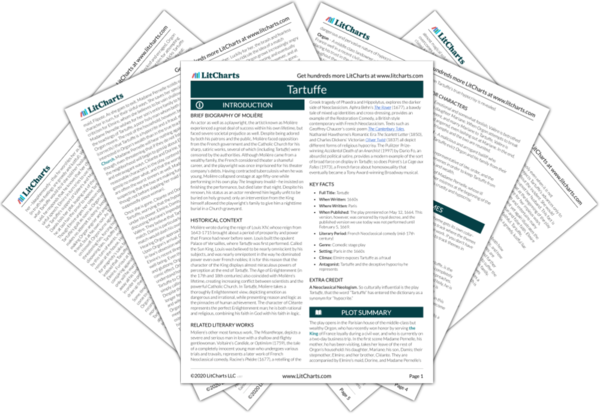Moliere’s other most famous work,
The Misanthrope, depicts a severe and serious man in love with a shallow and flighty gentlewoman. Voltaire’s
Candide, or Optimism (1759), the tale of a completely innocent young man who undergoes various trials and travails, represents a later work of French Neoclassical comedy. Racine’s
Phèdre (1677), a retelling of the Greek tragedy of Phaedra and Hippolytus, explores the darker side of Neoclassicism. Aphra Behn’s
The Rover (1677), a bawdy tale of mixed up identities and cross-dressing, provides an example of the Restoration Comedy, a British style contemporary with French Neoclassicism. Texts such as Geoffrey Chaucer’s comic poem
The Canterbury Tales, Nathaniel Hawthorne’s Romantic Era
The Scarlett Letter (1850), and Charles Dickens’ Victorian
Oliver Twist (1837) all depict different forms of religious hypocrisy. The Pulitzer Prize-winning
Accidental Death of an Anarchist (1997) by Dario Fo, an absurdist political satire, provides a modern example of the sort of broad farce on display in
Tartuffe; so does Poiret’s
La Cage aux Folles (1973), a French farce about homosexuality that eventually became a Tony Award-winning Broadway musical.
